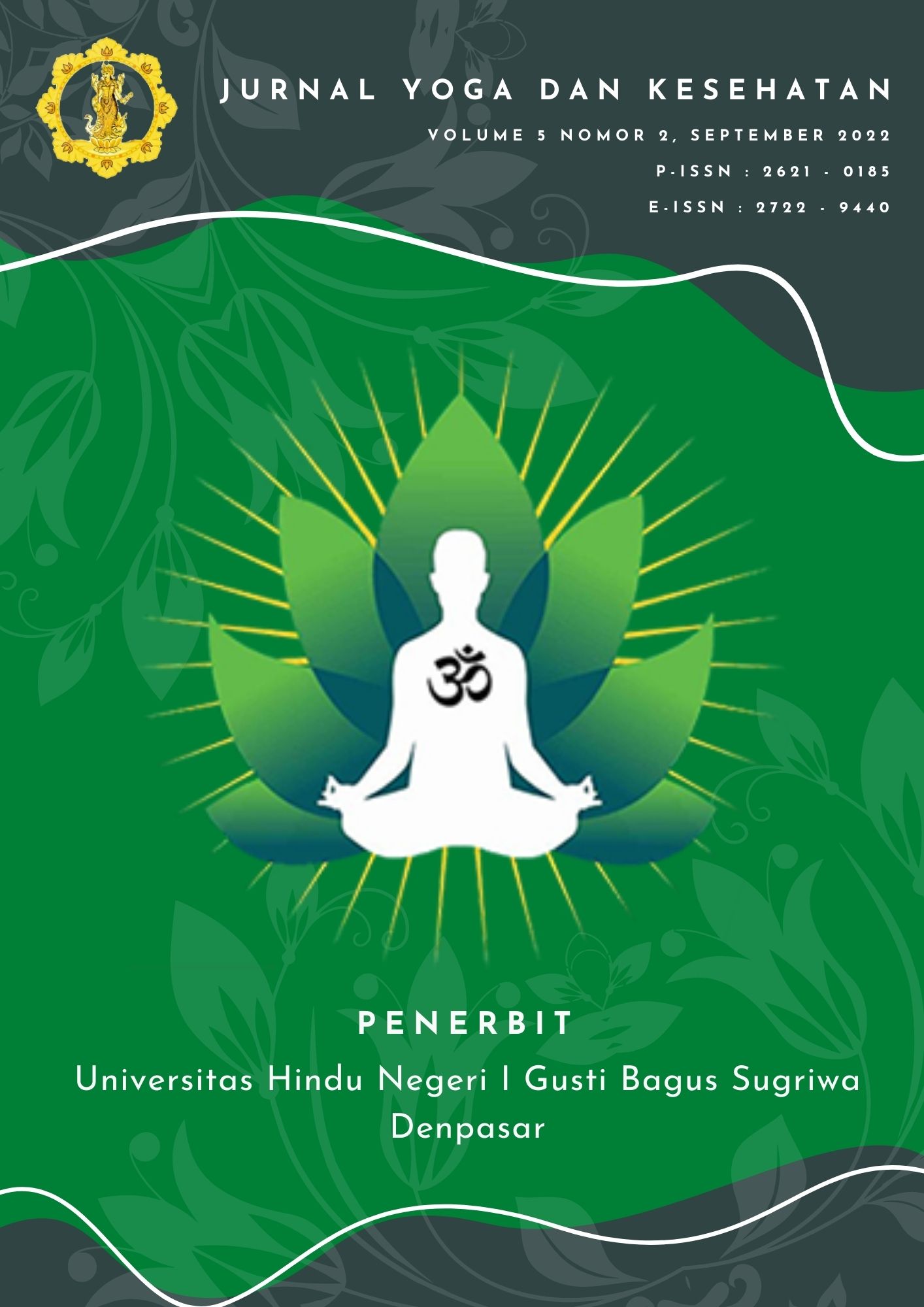Kombinasi Yoga dan Herbal dalam Pengobatan Beserta Efektivitasnya
DOI:
https://doi.org/10.25078/jyk.v5i2.1896Keywords:
yoga, herb, combinationAbstract
Yoga is often combined with other types of therapy to maximize the patient's treatment.
Combinations of yoga and herbs is one of the possible combinations. This study aims to summarize
and review research results related to the combination of yoga and herbs. Research articles are
collected from various online databases such as Google Scholar, Google, Medline, Pubmed, and
Science Direct. Inclusion and exclusion criteria were applied to obtain clinical research articles that were original, relevant to the topic of interest, published in the last 10 years, full text accessible, also methods and results were described well and valid. In total there are only 5 articles that qualify for discussion. The research was conducted in Indonesia and India. The herbs were used in inhalation and oral forms. Indications for the use of a combination of yoga and herbs are reducing dismenorrhea pain, cronic joint pain, helping treat type 2 diabetes mellitus, hypertension, and improving sleep quality. The combination of yoga and herbs is still not widely applied and studied. It opens up great opportunities for further research.
References
Akhtar, M. S., Ramzan, A., Ali, A., & Ahmad, M. (2011). Effect of Amla fruit (Emblica officinalis Gaertn.) on blood glucose and lipid profile of normal subjects and type 2 diabetic patients. International Journal of Food Sciences and Nutrition, 62(6), 609–616. https://doi.org/10.3109/09637486.2011.560565
Ali, M., & Hakeem, K. R. (2020). Pharmacological and Bioactive Basis of Adhatoda vasica L. Nees. Dalam M. Ali & K. R. Hakeem (Ed.), Scientific Explorations of Adhatoda vasica: An Asian Health Remedy (hlm. 61–84). Cham: Springer International Publishing. https://doi.org/10.1007/978-3-030-56715-6_7
Bankar, M. A., Chaudhari, S. K., & Chaudhari, K. D. (2013). Impact of long term Yoga practice on sleep quality and quality of life in the elderly. Journal of Ayurveda and Integrative Medicine, 4(1), 28–32. https://doi.org/10.4103/0975-9476.109548
Cramer, H. (2016). The Efficacy and Safety of Yoga in Managing Hypertension. Experimental and Clinical Endocrinology & Diabetes, 124(2), 65–70. https://doi.org/10.1055/s-0035-1565062
Datey, P., Hankey, A., & Nagendra, H. R. (2018). Combined Ayurveda and Yoga Practices for Newly Diagnosed Type 2 Diabetes Mellitus: A Controlled Trial. Complementary Medicine Research, 25(1), 16–23. https://doi.org/10.1159/000464441
Deshmukh, S. T., & Bidwai, V. (t.t.). To reduce joint pain by combination of curcumin with Cow Ghee with yoga. PubMed, 1(1). Diambil dari
https://pubmed.ncbi.nlm.nih.gov/?term=yoga+aroma&filter=simsearch2.ffrft&filter=simse arch3.fft&filter=pubt.clinicaltrial&filter=pubt.randomizedcontrolledtrial&filter=datesearch.y_10
Dutta, A., Aruchunan, M., Mukherjee, A., Metri, K. G., Ghosh, K., & Basu-Ray, I. (2022). A Comprehensive Review of Yoga Research in 2020. Journal of Integrative and Complementary Medicine, 28(2), 114–123. https://doi.org/10.1089/jicm.2021.0420
Ebnezar, J., Nagarathna, R., Yogitha, B., & Nagendra, H. R. (2012). Effect of integrated yoga therapy on pain, morning stiffness and anxiety in osteoarthritis of the knee joint: A randomized control study. International Journal of Yoga, 5(1), 28–36. https://doi.org/10.4103/0973-6131.91708
Eke-Okoro, U. J., Raffa, R. B., Pergolizzi Jr, J. V., Breve, F., Taylor Jr, R., & Group, the N. R. (2018). Curcumin in turmeric: Basic and clinical evidence for a potential role in analgesia. Journal of Clinical Pharmacy and Therapeutics, 43(4), 460–466. https://doi.org/10.1111/jcpt.12703


















